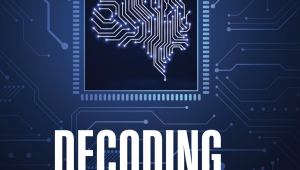There is general agreement that we are in the early stages of the fourth industrial revolution, creating a global digital economy where billions of people are connected by mobile devices to previously unimaginable processing power, storage and knowledge. Where possibilities will be multiplied by developments in technologies such as artificial intelligence, robotics and quantum computing. The concern is that it is already having a great effect on our economy and society, but we don’t yet have the understanding or tools to measure it and react accordingly.
In the first industrial revolution, steam power replaced human and animal labour, dramatically increasing productivity. The second combined electrification and mass production. Firms became bigger, specialised and vertically integrated, creating assembly lines that increased production of consumer goods. For the third, the computer chip combined with IT, automating production and coordinating logistics for global supply chains.
In each case, productivity increased dramatically, and prices fell. Firms and jobs became redundant; innovative new firms created a stock market boom, followed by financial collapse and a prolonged depression - the Victorian Depression, the Great Depression of the 1930s and the global financial crisis of 2008.
The big challenge for policymakers is to assess where we are in this cycle so that they can act. But the current statistical measures seem to provide poor tools for planning.
Productivity growth appears slow, despite considerable anecdotal evidence that artificial intelligence is being deployed in many parts of the economy. Also, companies are transferring functions to the cloud and accounting for this as an expense, whereas, in the past, investment in new systems would have been recorded as capital expenditure. Similarly, many organisations now employ large numbers of IT specialists to customise client services and applications; again treated as expenses. Plus, a trend for companies to invest in intangibles is making it harder to estimate the economy’s true capital worth.
Stephen Poloz, the governor of the Bank of Canada, argues that we could already be experiencing a profound positive technology shock to the global economy, which is supporting economic growth, holding back inflation and wage growth, and redistributing resources from the goods sector to the services sector. But the data doesn’t show it, as the statisticians haven’t yet worked out how to measure the digital economy.
1930 saw a familiar cycle: productivity rose, prices fell, jobs were lost and firms closed, then new ones innovated, creating a stock market boom, followed by collapse
The impact on communities is of even greater concern. The beneficiaries of innovation tend to be the providers of intellectual and physical capital – the innovators, shareholders and investors – which explains the rising wealth gap between those dependent on capital versus labour. The job market is segregated into ‘low- skill/low-pay’ and ‘high-skill/high-pay’. This explains disillusionment and fear that incomes will continue to stagnate, and why middle classes globally are feeling a pervasive sense of unfairness.
Could this turn into the same fear that confronted individuals during the first three industrial revolutions, but this time ignited, fuelled and shared via social media? Is the fourth industrial revolution already disrupting our economy and our society more than we think?














